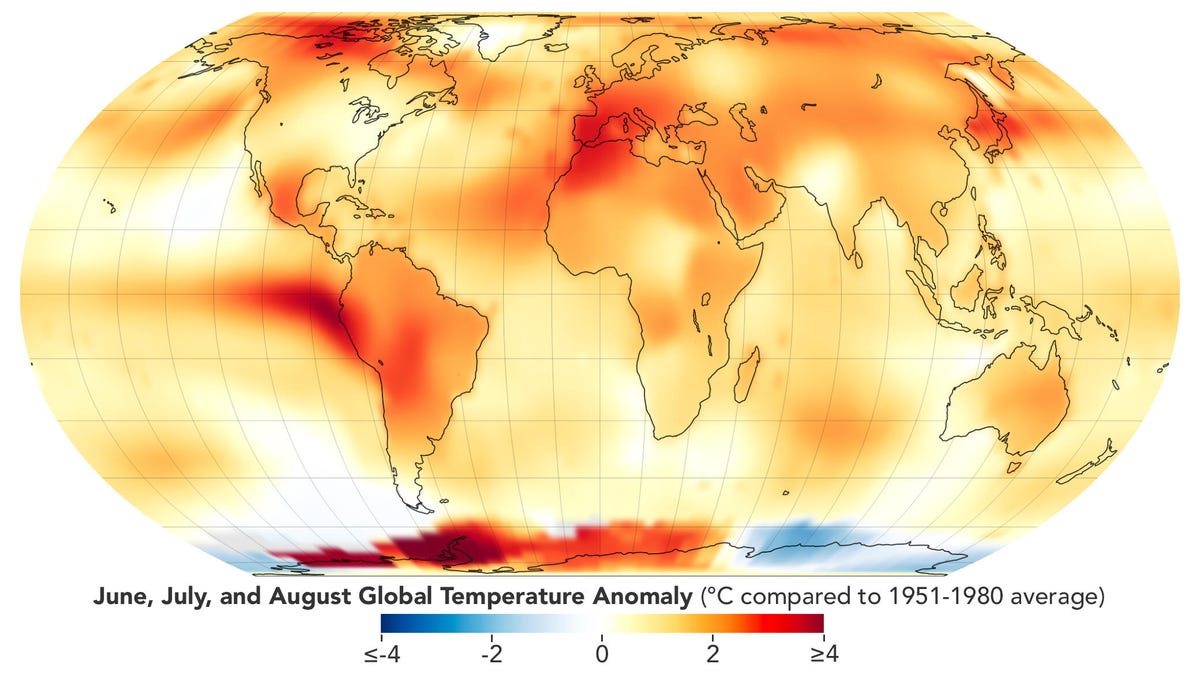If this summer felt to you like a never-ending sweltering heat wave, then you’re not alone. The summer of 2023 was the hottest on record, NASA said Thursday. Experts with
NASA’s
Goddard Institute of Space Studies said the heat was connected to human-caused climate change combined with a natural climate pattern called El Niño.
Global records date back to 1880. NASA data shows the combined months of June, July, and August were 0.41 degrees Fahrenheit (0.23 degrees Celsius) warmer than any summer on record. Compared with the average summer between 1951 and 1980, summer 2023 was 2.1 degrees Fahrenheit (1.2 Celsius) warmer. NASA considers June through August to be meteorological summer in the Northern Hemisphere.
“Summer 2023’s record-setting temperatures aren’t just a set of numbers — they result in dire real-world consequences,” said NASA Administrator Bill Nelson. Nelson called out climate change as “a threat to our planet and future generations.”
NASA specifically cited human-caused greenhouse gas emissions as a driving force behind climate change and the global warming trend that led to such a scorching summer. Most of these greenhouse gas emissions come from China, the US and the countries of the European Union, according to the Center for Climate and Energy Solutions. Per capita, greenhouse gas emissions are highest in the US and Russia.
NASA gathers its surface air temperature data from thousands of meteorological stations around the world, including ones that are located at sea. The agency isn’t just looking at the raw heat numbers but instead calculates temperature anomalies, so it’s looking at how temperatures are different from previous averages.
What happened with temperatures out at sea is just as important as what people were experiencing on land. “Exceptionally high sea surface temperatures, fueled in part by the return of El Niño, were largely responsible for the summer’s record warmth,” said NASA JPL climate scientist Josh Willis.
El Niño is a recurring natural weather pattern of higher than normal surface temperatures in parts of the Pacific Ocean. El Niño exacerbated conditions over the summer, setting the stage for record-high heat.
Summer may be history for the Northern Hemisphere in 2023, but concerns remain for the future. More records could fall as the globe continues to warm.
“Unfortunately, climate change is happening. Things that we said would come to pass are coming to pass,” said GISS Director Gavin Schmidt. “And it will get worse if we continue to emit carbon dioxide and other greenhouse gases into our atmosphere.”

